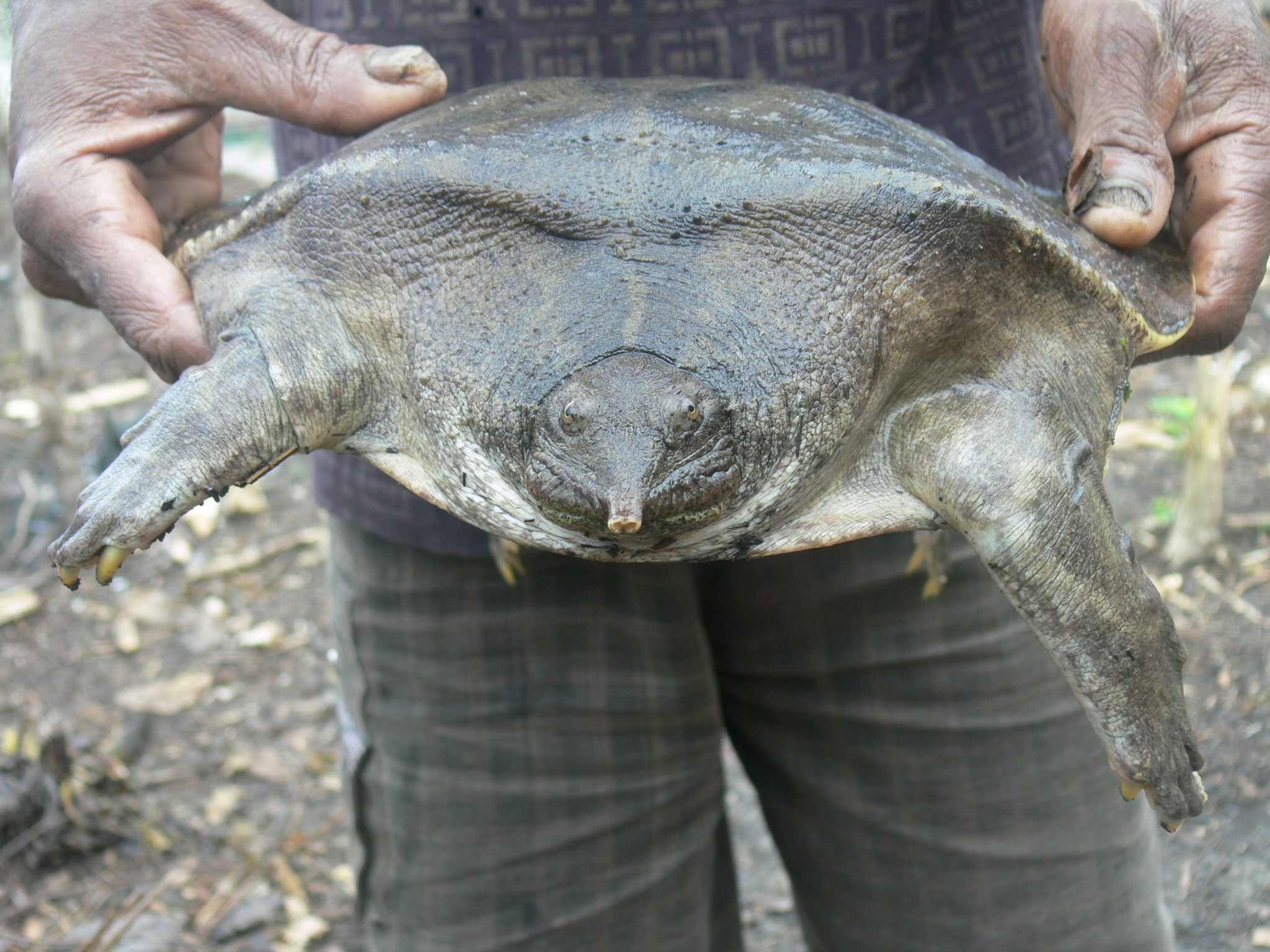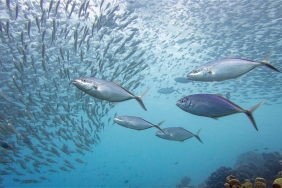PIG-SNOUTED TURTLE, A "GO INTERNATIONAL" PAPUAN ENDEMIC
The pig-snouted turtle (KMB), an endemic species that is hunted in its natural habitat, traded, and smuggled out of the country, many survive and many die on the way.
The KMB, also known as the pig-snouted labi-labi (Carettochelys Insculpta), is an endemic animal from the southern region of Papua that is included in the 21 iconic species that are rampantly traded illegally. From its natural habitat in several villages in Asmat regency, KMB is already vulnerable to poaching. Local communities have consumed KMB eggs for generations in limited quantities. The rampant market demand and high price of KMB eggs have made KMBs far more valuable as a commodity than a food source.
Some collecting points are also available at the district level, they involve local people to hunt, buy the eggs and establish captivity for hatching the eggs. Hatchling sales are more profitable than eggs. Once the eggs hatch, the hatchlings are sold and smuggled. The hatchlings are packed in containers in batches, and shipped through airports to international destinations. The biggest destination countries are Hong Kong and Taiwan. The huge demand from these two markets cannot be separated from the KMB's properties, which are believed to be a strong medicine and beauty cosmetic ingredient, as admitted by one of the smuggling suspects who was arrested in October last year. However, there has been no serious research into these claims.
These smugglers were part of a wildlife trafficking network but later focused on selling KMBs because of their promising market value. Hatchlings can be sold on the international market for $39-$56 each. National trade in MVCs has also become more widespread with adult MVCs ranging in price from 1.5-3 million rupiah. Generally, sales in the national market are as pets.
In the past year, hatchling smuggling has been thwarted by thousands of hatchlings. Hundreds of hatchlings were returned to their natural habitat in southern Papua, a number of hatchlings were not saved, and cases were also found as missing evidence. The latest case just happened at Mopah Airport in Merauke on January 19, 2019. Airport officers thwarted the smuggling of KMBs out of Mopah with evidence in the form of one suitcase containing KMBs. Unfortunately due to officer negligence, the evidence was later lost. The case is currently under investigation by the authorities, by collecting evidence, CCTV footage and witness statements.
The illegal RTC trade is widely operating for a number of reasons. Officer negligence with the disappearance of evidence is one factor of the lack of supervision. Meanwhile, regulations, especially the protection of RTCs through law enforcement, have not provided a deterrent effect for perpetrators. For example, the defendant in a case of smuggling 1,190 RTCs was sentenced to 4 months imprisonment by the Merauke District Court and a fine of 5 million rupiah, if the defendant is unable to pay, it will be replaced by 2 months imprisonment. This verdict is lighter than the public prosecutor's demand of 8 months in prison.
The status of the RTC according to the IUCN Redlist is categorized as EN (endangered) or threatened with extinction. Meanwhile, according to CITES, the RTC is included in the appendix II category, which means the list of species that are not threatened with extinction, but may be threatened with extinction if trade continues without regulation. This means that RTCs should not be traded if they are collected from the wild. However, a trader will say that RTCs are animals bred from broodstock that are also bred. This then becomes a loophole to trade RMBs with limited quotas. In fact, until now there has been no legal captive breeding or cultivation of KMBs.
WWF-Indonesia currently works in the southern region of Papua in the districts of Boven Digoel, Mappi, Merauke, all the way down to Asmat District to the lowland area of Lorentz National Park in Mimika District. Several villages scattered in the region are the habitat of RTCs. From the results of surveys conducted in several villages, several RTC nests were found, but some had also been destroyed and their eggs taken. Economic problems are the central issue in the collection of these eggs.
Southern Papua Landscape Manager, Bernardus Ronald Tethool does not deny that there has indeed been a scarcity of endemic animals in Southern Papua including the KMB due to poaching and illegal trade. For this reason, according to him, there must be a joint commitment between government institutions, communities, and CSOs to find and get the best solution to preserve biodiversity and improve the welfare of the people in South Papua. The cooperation of these parties is being encouraged by WWF in several sites to improve the monitoring of animal trade to law enforcement, as well as providing alternative economic improvement for the community.
Seriousness in habitat management, monitoring and improving the economy of local communities is expected to improve the quality and quantity of life of KMBs in the wild.





